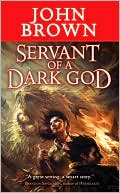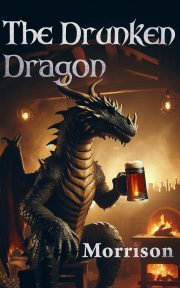Key Conditions for Suspense Part 26:
Patterns for Resolution Elements 1-3
by John D. Brown
 The following is part of a continuing series. If you wish to start at the beginning, head to It’s All About The Reader.
The following is part of a continuing series. If you wish to start at the beginning, head to It’s All About The Reader.
In my last six posts, I’ve discussed options for the presentation and struggle phases. In my next two posts, I’ll discuss options for the resolution phase and wrap the whole series up.
So let’s look at the resolution phase. Readers want their tension to build to a pitch. Then they want to feel a release. The resolution phase is where you deliver that delicious release.
The resolution isn’t something completely different from what you’ve done before. It’s just another trip around the story cycle. As such, you have:
- Reaction
- Action
- Preparation
- Approach
- Climax
- Aftermath
At the end of the struggle phase, something locks the hero into the final showdown. The hero reacts to that thing. The reaction might be short or long, and includes what any reaction would—emotion, thought, discussion, motive, and decision. In Star Wars, this is the sequence where the rebels react to the fact that the empire knows where their base is and is going to obliterate it. It includes the scene where they discuss how they’re going to blow up the death star.
Because the reaction is part of one more trip around the story cycle, once the hero decides what he’s going to do, he begins to act on his decision. This may include some preparation. In action movies, he straps on his guns, says farewell, etc. In a crime drama, he may get his team organized. In a romance like Sabrina, the people surrounding the Harrison Ford character give him a plane ticket and his undies (oh, that was such a fun moment in the movie). In Star Wars, this is when Luke and the others are getting into their fighters. The preparation, as in Sabrina, might be short or, as with Star Wars, a bit longer.
After our hero has prepared himself, he approaches the climax where he’ll make the final attempt to solve the problem. In stories with villains, this is where he heads to the final shown down. Like the preparation, the approach may be short or long. In Sabrina, for example, all we see is the hero’s plane taking off. In Star Wars, the approach—the rebels taking off and flying to the death star–requires more time.
Why do we give the preparation and approach time? Because, even if they’re short, they allow us to extend the waiting and juice the reader’s suspense. We don’t have to include them. But they are options we can use to draw tight the reader’s anticipation for the climax.
At some point, the hero engages. This is the climax. He fights the villain, makes one last attempt to get the girl, executes his plan. Again, this is the climax. It should be hard. There should be a struggle.
At the moment when all seems to be lost, the hero resolves the main problem of the story, finally. Or fails to do so with no chance of recovery.
As with any action, it’s important to know what the ultimate obstacle to victory is. Is it cowardice, knowledge, power? Once we know this, it’s easier to write the resolution because this time, instead of going back around the story cycle, the hero removes that last obstacle and vanquishes the opposition. In a love story, the lovers remove the last obstacle to their everlasting commitment or their ability to be with one another. In a mystery, the hero puts the last piece of the puzzle in place and reveals the truth.
At that point, readers want to see the consequences. They want to bask in the triumph or tragedy for a while. They want to let the feeling slowly mellow. And so we show what this means to the character’s future life. We show the rewards or the punishments of having solved the problem. Maybe we resolve an outstanding subplot or two (contrary to what some suggest, not all subplots have to be resolved before the climax; it is sometimes perfect to resolve a few afterwards). This is the aftermath.
So the resolution phase is just another trip around the story cycle, but one where the result is final. Here are some patterns I’ve seen that work in the resolution phase.
Twists
As with any scene or sequence, there will be back and forth, stimulus and response—the hero will go around the story cycle a couple of times and run into troubles until the odds for winning look pretty slim.
The hero can go in and try to win with his original plan. This is like Luke flying in to blast the death star’s garbage chute. That’s the plan and the question is whether that plan will work or not. Or the hero can go in with his big plan and, twist, it completely fails! I won’t ruin Hunger Games for anyone, but there’s just such a twist there. There’s another in The Good Guy. The same in Servant of a Dark God.
Sometimes, at a moment when all seems lost, logical but unexpected help comes to the hero’s aid. This is what happened in Avatar when the animals stampede the opposition forces. And what happened in Star Wars when Han Solo comes roaring back to give Luke a clear shot. It doesn’t resolve the problem for the hero, but it sure helps. And it makes the readers cheer!
Have you seen other types of twists that can be used effectively? Surprise is a wonderful effect in the resolution. Which twists might you introduce?
Tests
In stories where hero has an insight and makes a decision to change at the end of the struggle phase, the showdown will test his resolve. It will often present a situation similar to one shown in the beginning that established the character’s flaw. So if the hero was a coward then and sacrificed his buddies to save his own skin, it will present a similar situation at the end. But this time the hero damns his own self-interest and charges in to save his friends.
Does it feel right to test your hero in the ending? Is that the type of story you’re writing?
Aftermath options
As for the aftermath, I’ve seen some that are quite abrupt others that are longer. So length is one option.
Another option for the aftermath is the finality of the ending. For example, Cormac McCarthy’s The Road shows the reward and immediately ends. There are no remaining lines of tension. (For those who have read it, I think you’ll agree that seeing fish in a living stream have never brought more hope.)
In my story “Bright Waters” I present a short final ending. It’s a love story set in the 1700’s in New York. It involves a fearsome Dutch trapper, a spunky Irish woman stolen as a girl in an Abenaki raid, and a small magical Iroquois tattoo. There are a number of plot turns through the story, but the ending is final.
On the other hand, other stories show the reward and then take it a step farther and not only show life moving on, but also raise one or more lines of tension, i.e. positive or negative possibilities.
This is often done in the first books in a series. For example, if you’re read the first book of my Dark God series, you’ll see that even though I wanted to make sure Servant of a Dark God ended with a satisfying finality, I also wanted it to project the reader’s mind forward. If you look at Star Wars and the Empire Strikes Back, you’ll see Lucas did the same.
Of course, you don’t have do this in a series. The many books in Sue Grafton’s alphabet series simply end. There is no “in next week’s episode” business. The same with those in Lee Child’s Jack Reacher series.
It’s also an option for stories that are not in a series. For example, in The Incredibles, the story ends with the Underminer (another villain) rising up from below, presenting future story possibilities. Do we need a sequel to that fabulous movie? No. That line of tension is fabulous just the way it is.
You can read another example in my short story “Loose in the Wires.” With that one, I wanted to end the hero’s tale, but I also wanted to project the reader’s mind forward and suggest other possibilities. Not because I was going to write a sequel, but, again, simply because it felt delicious.
What kind of aftermath seems right for your story?
Remember, all of these are just options. There’s no one right way. Just what feels the best and delivers the experience you want to deliver to the reader.
I think I’ll end today’s post there. In the next post, I’ll finish up the options for the resolution phase and then wrap up the series.
Happiness,
John
•••
 John Brown is an award-winning novelist and short story writer. Servant of a Dark God, the first book in his epic fantasy series, was published by Tor Books and is now out in paperback. Forthcoming novels in the series include Curse of a Dark God and Dark God’s Glory. He currently lives with his wife and four daughters in the hinterlands of Utah where one encounters much fresh air, many good-hearted ranchers, and an occasional wolf.
John Brown is an award-winning novelist and short story writer. Servant of a Dark God, the first book in his epic fantasy series, was published by Tor Books and is now out in paperback. Forthcoming novels in the series include Curse of a Dark God and Dark God’s Glory. He currently lives with his wife and four daughters in the hinterlands of Utah where one encounters much fresh air, many good-hearted ranchers, and an occasional wolf.
For a list of all of the posts in this series thus far, click on the “John D. Brown” tag.


